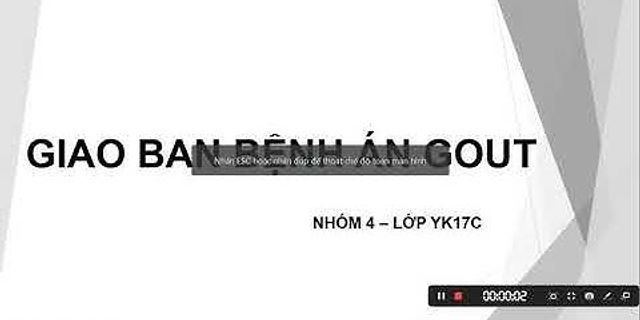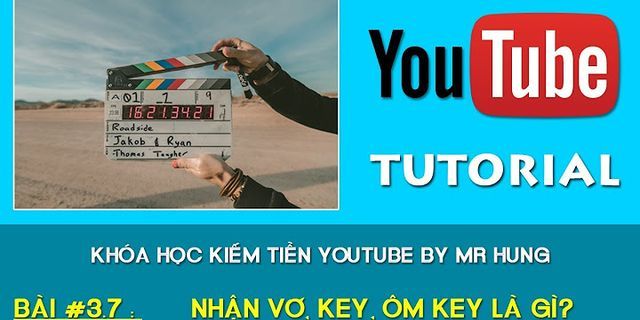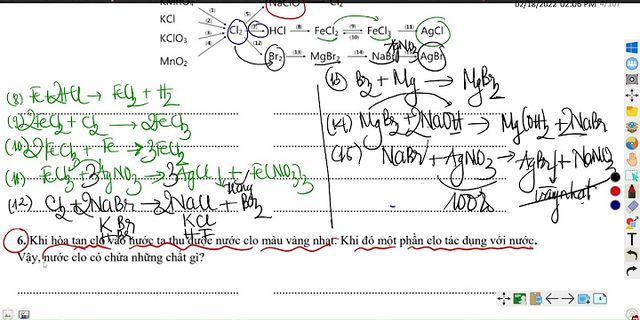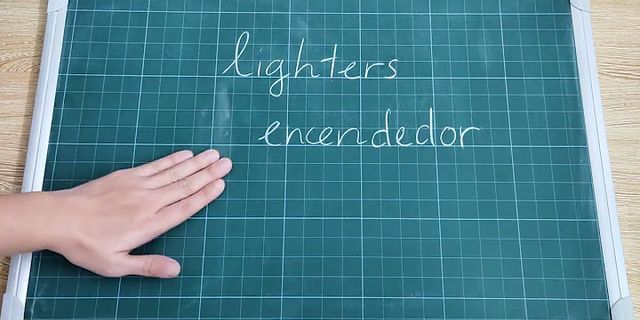There + Verb + Subject + Adverbial Complement ==> (There+ V + S +Adv C) Trong mẫu câu này, sau There + động từ là chủ ngữ và một trạng từ/phó từ, có thể kéo dài thành cụm từ, có thể là cụm từ chỉ nơi chốn.1. There are some boys at the door.Có mấy cậu bé ở cửa.2. There comes an end to all things. Một kết thúc đến với tất cả mọi thứ. ===> Việc gì rồi cũng kết thúc.3. There are many houses there.Có nhiều ngôi nhà ở đó.4. There are many apples on the table.Có nhiều trái táo trên bàn.5. There is much sugar in my coffee.Có nhiều đường trong cà phê của tôi.NTT giải thích thêm nhé: There + Be : có, nghĩa là có mặt, có tồn tại, chứ không phải là sở hữu, không thuộc về ai.Ex: There is a bicycle in the schoolyard. (Có cái xe đạp trong sân trường. ==> không phải xe của tôi, cũng không biết của ai, thấy nó ở đó thìnói thôi)There are twenty students in the class. (Có 20 học sinh trong lớp. ==> thấy họ ở trong lớp thì nói)Sau đây là 31 sơ đồ mô hình mà mình có được, chúc vuiSƠ ĐỒ MÔ HÌNH ĐỘNG TỪ1) La ( Linking verb + adjective: Hệ động từ + tính từ )The soup was delicious.2) Ln ( Linking verb + noun: Hệ động từ + danh từ )Frank became a teacher.3) I ( Intransitive verb: Nội động từ)Frank is reading.4) Ipr ( Intransitive verb + prepositional phrase: Nội động từ + cụm giới từ )People are comlaining about the traffic.5) Ip ( Intransitive verb + particle: Nội động từ + tiểu từ )The monkeys chattered away.6) Inpr ( Intransitive verb + noun or prepositional phrase: Nội động từ + danh từ hoặc cụm giới từ )The meeting lasted three hours / for three hours.7) It ( Intransitive verb + to-infinitive: Nội động từ +to-động từ nguyên thể )Jane hesitated to phone the office.8) Tn ( Transitive verb + noun: Ngoại động từ + danh từ )A small boy opened the door.9) Tn.pr ( Transitive verb + noun + prepositional: Ngoại động từ + danh từ + cụm giới từ )The accused convinced the court of his innocence.10) Tn.p ( Transitive verb + noun + particle:Ngoại động từ + danh từ + tiểu từ )The nurse shook the medicine up.11) Tf ( Transitive verb + finite ‘that’ clause:Ngoại động từ + mệnh đề hạn định mở đầu bằng ‘that’ )Officials believe that a settlement is possible.12) Tw ( Transitive verb + wh-clause:Ngoại động từ + mệnh đề mở đầu bằng cụm từ có wh )We hadn’t decided what we ought to do next / what to do next.13) Tt ( Transitive verb + to-infinitive: Ngoại động từ + to-động từ nguyên thể)Mary hates to drive in the rush-hour.14) Tnt ( Transitive verb + noun + to-infinitive:Ngoại động từ + danh từ + to-động từ nguyên thể )I expect the parcel to arrive tomorrow.15) Tg ( Transitive verb + noun + -ing form of a verb:Ngoại động từ + dạng –ing của động từ )Peter enjoys playing football.16) Tsg ( Transitive verb + noun(+ ’s) + ing form of a verb:Ngoại động từ + danh từ có ‘s + dạng –ing của động từ )We dread Mary/Mary’s talking over the business 17) Tng ( Transitive verb + noun + ing form of a verb:Ngoại động từ + danh từ + dạng –ing của động từ )She spotted a man waving in the crowd.18) Tni ( Transitive verb + noun + infinitive:Ngoại động từ + danh từ + động từ nguyên thể )We watch the men unpack the china.19) Cna ( Complex-transitive verb + noun + adjective:Ngoại động từ phức + danh từ + tính từ )The fridge keeps the beer cool.20) Cnn ( Complex-transitive verb + noun +noun:Ngoại động từ phức + danh từ + danh từ )The court considered Smith a trustworthy witness.21) Cnna ( Complex-transitive verb + noun + as + noun or adjective:Ngoại động từ phức + danh từ + as + danh từ hoặc tính từ ) The police didn’t accept the story as the truth/ as genuine.22) Cnt ( Complex-transitive verb + noun + to-infinitive:Ngoại động từ phức + danh từ + to-động từ nguyên thể )The thief forced Jane to hand over the money.23) Cng ( Complex-transitive verb + noun + -ing form of a verbNgoại động từ phức + danh từ + dạng –ing của động từ )The policeman got the traffic moving.24) Cni ( Complex-transitive verb + noun + infinitive:Ngoại động từ phức + danh từ + động từ nguyên thể )Mother won’t let the children play in the road.24) Dnn ( Double-transitive verb + noun + noun:Ngoại động từ kép + danh từ + danh từ )Henry taught the children French.25) Dnpr ( Double-transitive verb + noun + prepositional:Ngoại động từ kép + danh từ + cụm giới từ )Henry taught French to the children.26) Dnf ( Double-transitive verb + noun + finite ‘that’ clause:Ngoại động từ kép + danh từ + mệnh đề hạn định mở đầu bằng ‘that’ )Colleagues told Paul that the job would be easy.27) Dprf ( Double-transitive verb + prep. phrase + finite ‘that’ clause:Ngoại động từ kép + cụm giới từ + mệnh đề hạn định mở đầu bằng ‘that’ )Employers announced to journalists that the dispute had been settlled.28) Dnw ( Double-transitive verb + noun + wh-clause:Ngoại động từ kép + danh từ + mệnh đề mở đầu bằng cụm từ có wh )The porter reminded guests where they should leave their luggage.29) Dprw ( Double-transitive verb + prepositional. phrase + ‘wh’ clause:Ngoại động từ kép + cụm giới từ + mệnh đề mở đầu bằng cụm từ có wh )You should indicate to the team where they are to assemble/ where to assemble.30) Dnt ( Double-transitive verb + noun + to-infinitive )Ngoại động từ kép + danh từ + to-động từ nguyên thể )The director warned the actors not to be late.31) Dprt ( Double-transitive verb + prepositional phrase + to-infinitive)Ngoại động từ kép + cụm giới từ + to-động từ nguyên thể )Fred signalled to the waiter to bring another chair.Mẫu 1f: It + Verb + Subject Complement + (real) Subject * Subject Complement trong mẫu câu này là danh từ hoặc tính từ.* (real) Subject là:- 1 (cụm) gerund hoặc hiện tại phân từ (V-ing)- 1 (cụm) động từ nguyên mẫu có To (to Infinitive (Phrase) )- "For + (Pro)noun + to Infinitive (Phrase)"- 1 mệnh đề That (That Clause)1. It + V + Subject Complement + V-ingIt doesn't seem much good going on.2. It + V + Subject Complement + to Infinitive (Phrase)It seemed a pity not to use it.It seems (to me) a bold plan to advance against such strong opposition.3. It + V + Subject Complement + For + (Pro)noun + to Infinitive (Phrase)It doesn't seem much use for us to catch the 2 o' clock train.It seems (to me) unlikely for him not to be well.4. It + V + Subject Complement + That ClauseIt appears unlikely that we should arrive in time.It seems (to me) unlikely that he is not well.Mẫu 1d: It + Be + Subject Complement + (real) Subject 1. It is easy to do that.2. It is useless to try.3. It will be wiser to drive slowly.4. It would be a mistake to ignore his advice.5. It is no good hoping for their help.6. It was a difficult business getting everything in time.7. It is likely that there will be rain.8. It is doubtful whether he will be able to come.9. It is difficult for anyone to be angry with her.10. It is foolish for you to behave like that/ to behave like that/ behaving like thatTrong mẫu câu này, chúng ta dùng It để thay thế cho chủ ngữ thật khi chủ ngữ thật là:- Infinitive phrase. (câu 1,2,3,4)- Gerundial phrase. (câu 5,6)- (Noun) Clause. (7,8)- "For + (Pro)noun + to Infinitive" (câu 9,10)Subject Complement sẽ là: - Adjective- NounSubject + Verb + (Pro)noun + (not) To Infinitive 5. Subject + Verb + (Pro)noun + (not) To Infinitive ==> (S + V + Pro/N + (not)To Infinitive) Mẫu câu này tương tự như mẫu 4 nhưng các bạn để ý là có Pro(noun) trước To Infinitive.I do not want anyone to know.Can you help me to carry this box?We can't allow them to do that.He likes his wife to dress well.Didn't I ask you not to do that?She can't bear you to be unhappy.Did you mean us to know?We should prefer them to come next week.The rain caused the weeds to grow fast.They lead me to believe that there was no danger.Lưu ý:- Pro(noun) + To Infinitive kết thành một khối, được xem là Direct Obiect.Những động từ dùng trong mẫu này:a. Những động từ diễn tả sự cho phép , ra lệnh và yêu cầu:to allow, to permit, to lead, to suffer, to order, to command, to compel, to force, to cause, to persuade, to request, to get.Ex: My friend persuaded me to go with him.b. Những động từ diễn tả ý thích hoặc không thích:to want, to wish, to prefer, to desire, to like, to hate, (can't) bear.Ex: I wish you to come as soon as possible.c. Những động từ diễn tả hoạt động trí óc:to deny, to know, to mean, to acknowledge, to understand, to admit, to expect.Ex: He didn't expect her to reply but she did.Mẫu câu 6a: Subject + Verb + (Pro)noun + Bare Infinitive Subject + Verb + (Pro)noun + Bare Infinitive ==> (S + V + Pro/N + Bare Infinitive)Mẫu câu này tương tự như mẫu 5 nhưng các bạn để ý là dùng Bare Infinitive (động từ nguyên mẫu không To) nên không có not. Watch that boy jump!Did you see him go out? Did anybody hear Jonn leave the house?We felt the house shake. I like to hear her sing .Did you notice anyone come in?Lưu ý:- Pro(noun) + Bare Infinitive (động từ nguyên mẫu không To) kết thành một khối, được xem là Direct Obiect.- Động từ chỉ ra sự nhận biết bằng giác quan: feel, hear, listen to, look at, notice, observe, perceive, see, watch.- Bare Infinitive chỉ một hành động đã hoàn tất.- Khi chuyển qua thụ động cách (passive) phải thêm To:Ex: Did you see him go out?==> Was he seen to go out? Did anybody hear Jonn leave the house?==>Was John heard to leave the house?Subject + Verb + (Pro)noun + Bare Infinitive Subject + Verb + (Pro)noun + Bare Infinitive ==> (S + V + Pro/N + Bare Infinitive)1. They made me do that.2. What makes you think so?3. Let me go.4. We can't let the matter rest here.5. I have let you have news.6. Shall I help you (to) carry that box upstairs?7. We bade the men leave the hall.8. I have never known him behave so badly before.9. Have you ever known her lose her temper?Lưu ý:- Động từ trong mẫu 6B không chỉ sự nhận biết bằng giác quan: Make , Let, Bid, Help, Know. - Động từ Help có thể dùng với cả To Infinitive và Bare Infinitive.- Động từ Know luôn luôn dùng với thì Hoàn Thành.- Động từ See, Hear sẽ có nghĩa “have experience, have knowledge”- Động từ Let không thể chuyển sang thụ động (passive), thường được thay thế bằng Allow.Ex: Let me go ===> I am allowed to go.(nếu hét lên thất thanh, câu này sẽ có nghĩa là ”Buông tôi ra!”chứ không phải chỉ là "Hãy để tôi đi")Mẫu 1c: Subject + Be + To Infinitive Mẫu này ngắn và đơn giản, NTT post lên luôn:Subject + Be + To Infinitive (Chủ ngữ + Be + Động từ nguyên mẫu có To)1. The house is to let.2. The coast is still to come. 3. The causes are not far to seek. 4. You are to be congratulated.5. My aim is to help you. 6. To know all is to forgive all. Subject Complement = To Infinitive.MẪU CÂU 1 Công thức của mẫu này là :Chủ từ + động từ + túc từ trực tiếp Trong đó túc từ trực tiếp có thể là đại từ ,hoặc danh từ hay một mệnh đề danh từ khởi đầu bằng whatNhững ví dụ về mẫu câu này:( màu đen đậm : chủ từ ,màu đỏ : động từ ,màu xanh : túc từ trực tiếp )1 .I know your name 2. Do you want any help ?3. You did not answer my question 4. Who know the answer ?5. Have you had breakfast ?6. She said “good morning”7. She laughed a merry laugh 8. Please describe carefully what you sawMẫu 1b: Subject + Be + Adverb/ Prepositional Phrase NTT đưa tiếp lên đây nhé:Mẫu 1b: Subject + Be + Adverb/ Prepositional Phrase (Chủ ngữ + Be + Trạng từ (Phó từ)/ Cụm giới từ)1. He is out/in.Anh ta đi vắng ,ở bên ngoài / ở bên trong 2. The war is over.Chiến tranh đã kết thúc 3. The time is up.Đã hết giờ 4. She is in good health.(= healthy)Cô ấy khỏe mạnh 5. At last we were at liberty (= free)Rốt cuộc chúng tôi cũng được tự do6. That book is beyond me. (= too far from me)Quyển sách cách tôi quá xa 7. We were not out of danger (= safe)Chúng tôi không còn an toàn nữa 8. The mare is in foal. (= pregnant)Con ngựa cái đã mang thai9. It is of no importance.(= unimportant)Nó không quan trọng 10. Everything is in good order.(= tidy)Mọi thứ đều trật tự11. The machine is out of order. (= useless)Cái máy này bị hư rồi12. He was in a bad temper. (= angry)Anh ta đang trong cơn thịnh nộ (Chắc các bạn dễ dàng nhận ra 2 phần Subject + Be nên NTT chỉ tô đỏ phần Adverb/ Prepositional Phrase thôi.)Subject Complement có thể là:- Một trạng từ/ phó từ.- Một cụm từ bắt đầu bằng một giới từ có nghĩa tương đương một tính từ.Một số cụm giới từ thường dùng:- To be in love with (đang yêu ai)- To be out of breath (hết hơi)- To be in a hurry (đang vội vã)Mẫu câu 2c: Here/There+ Verb + Subject (Noun)==> (Here/There+ V + S) Here/There+ Verb + Subject (Noun)==> (Here/There+ V + S) Đây là mẫu câu loại đảo ngữ. Trong mẫu câu này, các bạn chú ý là động từ đứng trước chủ từ (chủ từ bắt buộc là danh từ) dù là động từ gì. Nhưng ta thường gặp To Be trong mẫu này.Here is your book.There comes the bus!Here are the papers you've been looking for.There are the others! (others thay thế cho danh từ)Mẫu câu 1g: Subject + Linking Verb + Subject Complement Mẫu câu này dùng cho linking verbs, là những động từ dùng với tính từ, có môt số động từ có thể cónghĩa khác hơn lúc được dùng là động từ bình thường.Subject Complement = tính từ.Subject + Linking Verb + Subject Complement 1. The leaves are turning yellow.Lá cây đang chuyển/ngả màu vàng.2. The dinner smells good.Bữa ăn tối ngửi ngon.3. Why is he looking angry?Tại sao anh ấy có vẻ giận dữ?4. He is growing old. Ông ấy đang già đi (trở nên già)5. Silk feels soft anh smooth.Lụa sờ mềm và mượt.6.This sentence doesn't sound right.Câu này nghe không đúng7. She married young.Cô ấy lập gia đình sớm.8. Everything looks different.Mọi thứ có vẻ khác lạ.9. Please keep quiet.Xin giữ im lặng.10. The fire has burnt low.Ngọn lửa lụi dần (cháy thấp xuống/ tàn dần )11. The door blew open.Cánh cửa (bị gió thổi) bật mở.12. He went mad.Anh ấy nổi điên.13. The city lies sleeping.Thành phố nằm, say ngủ.14. These vegetables don't taste fresh.Những rau này nếm không tươi.Mẫu câu 2a: Subject + Verb + Adverbial Complement ==> (S + V + Adv C) Subject + Verb + Adverbial Complement ==> (S + V + Adv C)Trong mẫu câu này, sau động từ là một trạng từ/phó từ, có thể kéo dài thành cụm từ, có thể là cụm từ chỉ nơi chốn (hôm trước một số bạn lầm với mẫu câu 1b đấy), thậm chí thành một mệnh đề.Adverbial Complement = Adverb (trạng từ/ phó từ)1. Come in.Cứ vào.2. Stand up.Đứng lên.3. We must turn back.Chúng ta/tôi phải quay lại.4. We didn't go anywhere last week.Chúng ta/tôi không đi đâu tuần trước.5. He works hard.Anh ta làm việc chăm chỉ/ học chăm.Adverbial Complement = Phrase (cụm từ)6. We talked face to face.Chúng tôi nói chuyện tay đôi. (mặt đối mặt)7. They were fighting tooth and nails. (= fiercely)Họ đánh nhau dữ dội.8. It looks like rain.Trời có vẻ sắp mưa.9. He will live a bachelor.(hiểu ngầm là "as" a bachelor)Anh ta sẽ sống độc thân.10. The books were lying on the floor.Những cuốn sách đang nằm trên sàn nhà.Adverbial Complement = Clause (mệnh đề)11. It looks as if it were going to rain.Trời trông có vẻ như sắp mưa.12. He behaves as if he owned the place.Anh ta cư xử như thể anh ta là chủ nơi này.Mẫu câu 1e: Subject + Verb + Subject Complement Mẫu này không dùng To Be, nhưng các động từ to seem, to appear có nghĩa gần như To Be, phần Subject Complement có thể là Adjective (+ To Infinitive Phrase/ Prepositional Phrase) hoặc Noun Phrase.* S + V + Adjective (+ Prepositional Phrase)1. He seemed much older.2. He seemed surprised at the news. 3. The situation seemed quite hopeless.* S + V + Adjective (+ To Infinitive Phrase)4. He seemed unable to get out of the habit.5. I seem (to be) unable to solve the peoblem.* S + V + Noun (Phrase)6. This seems (to be) an important point.7. This appears (to be) the only exception to the rule.Mẫu câu thứ nhất (S + Be + SC) NTT phải theo đúng thứ tự số mẫu câu (Verb Patterns) trong một cuốn tự điển để tôn trọng nguyên bản, theo đó thì mẫu S+V+O của đại hiệp wellfrog là mẫu thứ ba, khi nào đến mẫu đó NTT sẽ bổ sung vào thread ấy nhé.Trong mỗi mẫu câu lại có nhiều biến dạng, NTT sẽ làm đơn giản bằng cách đánh a,b,c,d Các bạn hãy cố gắng viết câu cho từng mẫu một nhé!1a. Subject + Be + Subject Complement (S + Be + SC)1. This is a book. 2. His father is a lawyer.3. That house is the doctor's. (1,2,3: SC = Noun)4. Those shoes are mine.5. It is I. (4,5: SC = Pronoun)6. The total is seventy - three.7. I was the first.8. It is dark. (6,7,8: SC = Adjective)9. I was annoyed.10. That book is interesting. (9,10: SC = Participle)11. Seeing is believing. (SC = Gerund)12. The trouble is that we are short of books. 13. Is this what you are looking for?14. This is where I work.15. Everything is as it should be.16. Everything was just as we had left it. (12,13,14,15,16: SC = Clause)Các bạn hãy nhớ là sau To Be không có Object nhé, chỉ có Complement (bổ ngữ) thôi, và Complement bổ nghĩa cho Subject.Một Subject Complement có thể là: - 1 danh từ - 1 đại từ- 1 tính từ - 1 gerund (V-ing)- 1 phân từ (V-ed/ V3 hay V-ing)- 1 mệnh đề Những câu trên dùng từ rất đơn giản để cho dễ hiểu, các bạn hãy chú ý vào mẫu câu thôi nhé!Mẫu câu 7a: Subject + Verb + (Pro)noun + Present Participle Subject + Verb + (Pro)noun + Present Participle ==> (S + V + Pro/N + Pre.P.)1. I saw the thief running away.2. We watched the train steaming past.3. I heard him giving orders.4. Can you smell something burning?5. You could feel her heart beating quickly.6. Did you notice anyone going out?7. We listen to the band playing in ther park.8. Just look at the rain coming down.So sánh mẫu 6a với 7a:* 6a:- Pro(noun) + Bare Infinitive (động từ nguyên mẫu không To) = Direct Obiect.- Động từ chỉ ra sự nhận biết bằng giác quan: feel, hear, listen to, look at, notice, observe, perceive, see, watch.- Bare Infinitive chỉ một hành động đã hoàn tất.* 7a: - Pro(noun) + Present Participle (V-ing) = Direct Obiect.- Động từ chỉ ra sự nhận biết bằng giác quan: feel, hear, listen to, look at, notice, observe, perceive, see, watch.- Present Participle chỉ một hành động đang xảy ra.Mẫu câu 11: Subject + Verb + Conjunctive + To Infinitive Subject + Verb + Conjunctive (question word) + To Infinitive ==> (S + V + Con + To Infinitive)I wonder how to get there.Do you know how to do it?I forget where to turn off the main road.She didn't know which one to buy.I didn't know whether to go or (to) turn back.I don't see how to stop him.Remember when to return.Have you settled where to go?Lưu ý:- Conjunctive / question words : Những từ dùng để hỏi: What, Where, When, Who, Which, Whose, How, Whether (câu hỏi gián tiếp), có thể được dùng để giới thiệu một câu cảm thán (với What và How) hoặc một câu hỏi độc lậpEx: What a beautiful house! How nice it is! Where did you go yesterday?- Conjunctive + To Infinitive = Direct Object (túc từ/tân ngữ trực tiếp)- Chủ từ của động từ chính cũng là chủ từ của To Infinitive.25 mẫu câu viết NTT sẽ đưa lên từ từ mỗi ngày nhé, xin các bạn đừng thắc mắc sao chưa đủ 25.1. Subject + Be + Subject Complement ==> (S + Be + SC)2. Subject + Verb + Adverbial Complement ==> (S + V + Adv C)3. Subject + Verb + Direct Object ==> (S + V + D.O)4. Subject + Verb + To Infinitive ==> (S + V + To Infinitive)(To Infinitive trong mẫu câu này là Direct Object của động từ)5. Subject + Verb + (Pro)noun + (not) To Infinitive ==> (S + V + Pro/N + To Infinitive) (trong đó (Pro)noun + (not) To Infinitive = Direct Object)6. Subject + Verb + (Pro)noun + Bare Infinitive ==> (S + V + Pro/N + Bare Infinitive)7. Subject + Verb + (Pro)noun + Present Participle ==> (S + V + Pro/N + Pre.P.)8. Subject + Verb + (Pro)noun + Adverbial Complement ==> (S + V + Pro/N + Adv C)9. Subject + Verb + (Pro)noun + Adjective ==> (S + V + Pro/N + Adj)10. Subject + Verb + That Clause ==> (S + V + That Cl)11. Subject + Verb + Conjuntive + To Infinitive ==> (S + V + Con + To Infinitive)12. Subject + Verb + Conjuntive + Clause ==> (S + V + Con + Cl)13. Subject + Verb + Gerund ==> (S + V + Gerund)14. Subject + Verb + Preposition + Prepositional Object ==> (S + V + Prep + Prep Obj)15. Subject + Verb + (Pro)noun + Preposition + (Pro)noun ==> (S + V + Pro/N + Prep + Pro/N)16. Subject + Verb + Indirect Object + Direct Object ==?(S + V + I.O. + D.O)17. Subject + Verb + (Pro)noun + That Clause ==> S + V + Pro/N + That Cl)18. Subject + Verb + Indirect Object + Conjuntive + To Infinitive ==> (S + V + I.O. + Con + To Infinitive)(trong đó Conjuntive + To Infinitive = Direct Object)19. Subject + Verb + (Pro)noun + Conjuntive + Clause ==> (S + V + Con + Cl)20. Subject + Verb + (Pro)noun + Complement ==> (S + V + Pro/N + Com)21. Subject + Verb + (Pro)noun + Noun ==> (S + V + Pro/N + N)22. Subject + Verb + (Pro)noun + Past Participle ==> (S + V + Pro/N + Past.Part.)(trong đó (Pro)noun = Direct Object , Past Participle = Object Complement)23. Subject + Verb ==> (S + V)(Mẫu câu này dùng cho intransitive verbs)24. Subject + Verb + To Infinitive (S + V + To Infinitive)(To Infinitive trong mẫu câu này là cụm từ chỉ mục đích "in order to +V")25. Subject + Verb + Indirect Object + Adverbial Adjunct ==> (S + V + I.O. + Adv Adj) |




















